WHAT IS MARINE DEBRIS?
Marine debris is defined as by NOAA as, “any man-made object discarded, disposed of, or abandoned that enters the coastal or marine environment.” Sources range from debris from inshore rivers to fishing gear from the offshore fishing industries. Some of it gets transported around the world through ocean currents, often getting deposited on beaches and shorelines, where it may remain for hundreds of years. Marine debris leads to a number of adverse results, including environmental, aesthetic, and economic impacts. The detrimental effects it has on the marine environment can range from death or harm to marine life to chemical accumulation and pollution.
ENTANGLEMENT
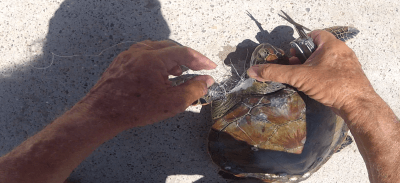
Entanglement is when an animal gets entangled in marine debris. One of the biggest sources of entanglement for sea turtles and birds is from fishing line. In Texas, there is a Texas Monofilament Recovery and Recycling Program (MRRP) that is coordinated by the Texas Sea Grant College Program. It is a statewide, volunteer-led effort to reduce monofilament in the environment by:
• educating the public about the problems caused by monofilament line left in the environment, and
• encouraging recycling through a network of line recycling bins and drop-off locations.
For more information about MRRP, contact John O'Connell, Texas Sea Grant Extension Agent, at 979-864-1558.
To find out where a recycling bin is located near you, follow this link: Recycling Bins in Texas.
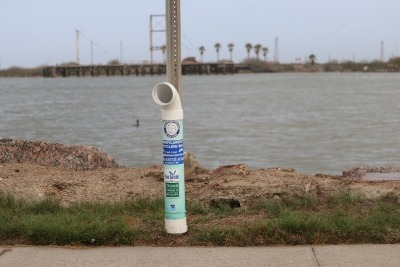
OUTREACH
The Mission-Aransas Reserve received funding from the National Fish and Wildlife Foundation in the fall of 2016 to create an educational campaign that is geared towards educating mariners about marine debris in South Texas. Some of the products that will be developed during this campaign include short videos of marine debris and the impact of fishing line being discarded in the water, brochures about how boaters can make a difference in helping to reduce the amount of debris in the ocean, billboards to reach large numbers of folks driving to the South Texas coast, and educational give-a-ways that have an inspriational message of how to leave the ocean a better place. Stay tuned for additional media coming out on this site in the near future about this campaign.
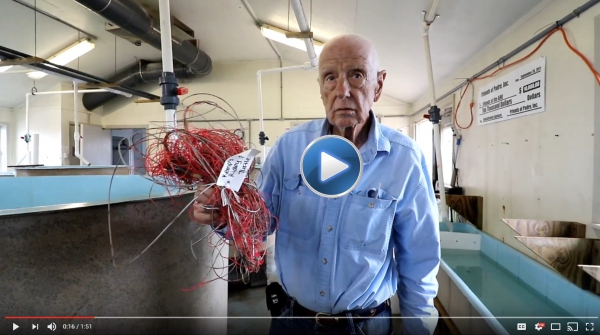
Entanglement video with Tony Amos.

RESEARCH
Here at the Mission-Aransas Reserve, we are initiating a study to monitor marine debris along beach and bay shorelines in the Coastal Bend region: Mustang Island, North Padre Island, San Jose Island and Aransas Bay (Figure 1). We will be utilizing NOAA Marine Debris Program’s Shoreline Monitoring Protocols, allowing for us to compare our findings to other marine debris monitoring projects using this same methodology across the country.
In October 2015 we began collecting samples monthly from established 100m transects. Any debris larger than 2.5 cm (or a bottle cap) is collected, brought back to the lab, sorted by type, counted, and weighed (Figure 2). In addition to accumulation rates, types, and weights, the data will provide insight in terms of seasonal and geographical trends, and sources of the debris. We are also looking for evidence of “turtle bites” on items we collect, to see if there are any patterns.
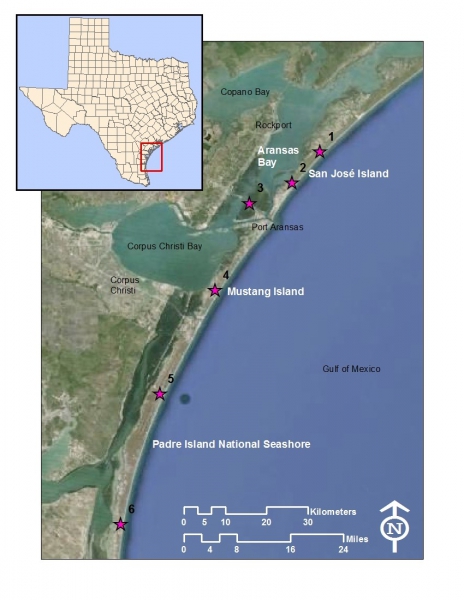
Figure 1. Map of monitoring stations.
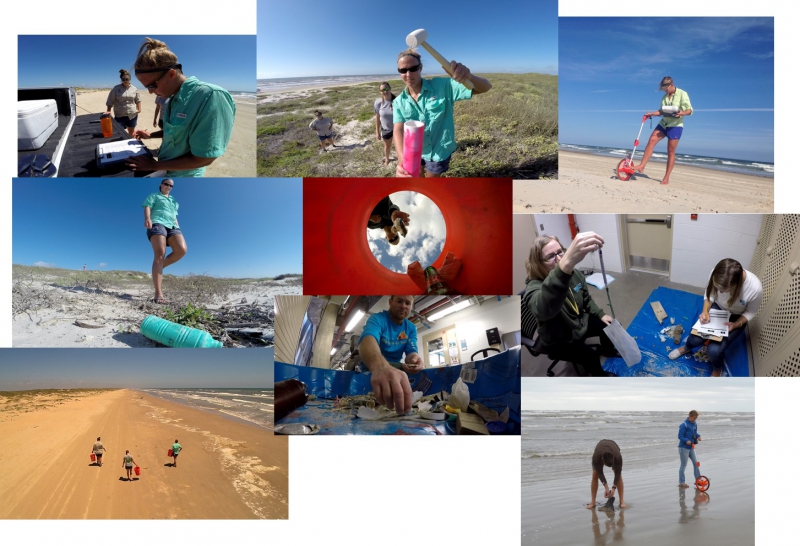
Figure 2. Images of sampling and of types of marine debris collected.
These data will provide information to resource managers and policy-makers so that solutions can be developed to prevent marine debris from reaching our estuaries and oceans. This project is funded through a grant from the National Oceanic and Atmospheric Administration Marine Debris Program in partnership with The University of Texas Marine Science Institute.
References:
NOAA Marine Debris Shoreline Survey Field Guide
| tunnell_marine_debris_road_scholar_3-4-16.pdf | 4.28 MB |

